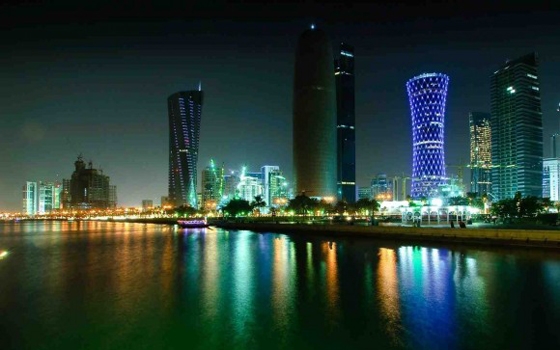Standard & Poor’s Rating Services (S&P) said Qatar’s economic growth will average around four percent in 2015-2018, helped by the government’s huge investment program.
“We project real economic growth in Qatar to average about four percent annually in 2015-2018, sustained by the government’s $220bn investment program.
“We are affirming our ‘AA/A-1+’ ratings on Qatar. The outlook is stable,” said the rating agency.
“We project slower real GDP growth of about four percent during 2015-2018 because the hydrocarbon sector will likely continue to stagnate. The non-oil sector should remain buoyant, thanks to public investment and supported by the growing population,” it said.
The hydrocarbons sector creates about 55 percent of GDP, 90 percent of government revenues (oil and gas taxes and royalties, plus dividends from Qatar Petroleum) and 85 percent of exports, noted S&P.
“We view Qatar’s economy as undiversified. The stable outlook reflects our view that Qatar’s high economic wealth and strong external and fiscal positions will balance its institutional shortcomings and limited monetary flexibility over the next two years”.
In 2013-2014, the oil and gas sector expanded by about 2 percent, and the non-oil sector by 12 percent, resulting in average annual GDP growth of about 6 percent.
Qatar’s high wealth means that its relatively weak per capita economic growth performance is not an immediate concern for ratings.
“However, beyond our two-year outlook horizon, Qatar’s economic risk position could deteriorate relative to economies that are expanding more rapidly,” it said.
According to S&P, medium- to long-term challenges to Qatar’s competitive position in the liquefied natural gas (LNG) market are likely to come from new shale production, Russia’s gas pipeline to China, and increased pressure to delink LNG contracts from the oil price.
The agency sees several factors that support Qatar’s competitive position in the LNG market.
First, it expects global demand for natural gas to remain strong, absorbing the new supply.
Second, Qatar’s strategy has been to diversify into all major markets, adjusting the mix of destinations and contract types according to market needs.
Moreover, the majority of its exports are under long-term contracts, which provide certainty of volume off-take, while built-in diversion clauses in the contracts provide additional flexibility to manage quantity and price risks.
Third, Qatar will continue to have a cost advantage over many new projects in other countries.
The Peninsula
29 March







































































